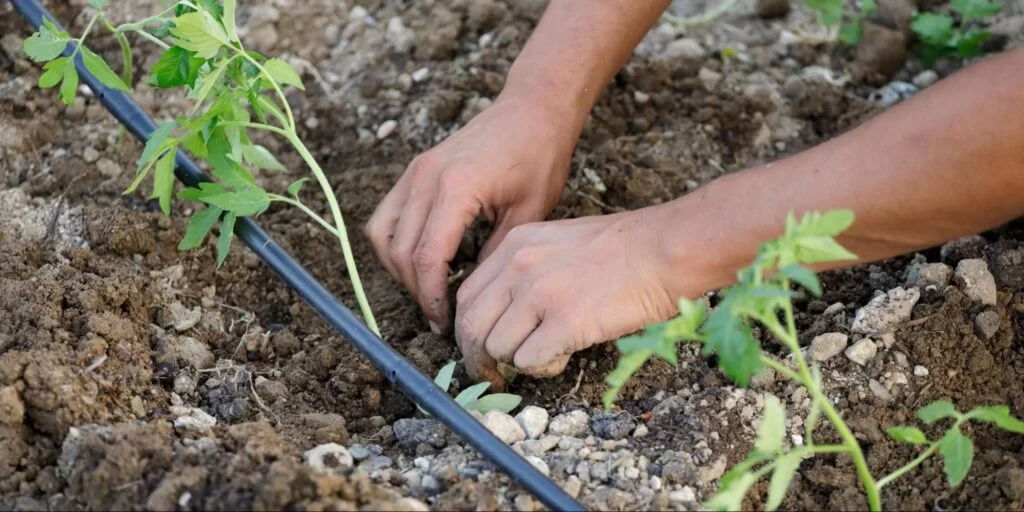Drip irrigation is an advanced and efficient method of watering crops that delivers water directly to the root zone of plants through a network of tubes, pipes, and emitters. This technique has gained popularity in agriculture due to its ability to conserve water and enhance crop yield. However, like any system, it comes with its own set of advantages and disadvantages. This article explores the merits and demerits of drip irrigation, providing a comprehensive overview of its impact on agriculture and water management.
Merits of Drip Irrigation
- Water Conservation: Drip irrigation is highly efficient in water usage. By delivering water directly to the plant roots, it minimizes evaporation and runoff, ensuring that water is used precisely where it is needed. This efficiency makes drip irrigation particularly valuable in arid and semi-arid regions where water resources are limited.
- Increased Crop Yields: The precise application of water and nutrients through drip irrigation can lead to improved crop yields. Plants receive a consistent supply of water, which promotes healthy growth and development. Additionally, the system can be optimized to deliver nutrients directly to the root zone, enhancing plant health and productivity.
- Reduced Weeds and Soil Erosion: Drip irrigation reduces the amount of water applied to the soil surface, which can help prevent weed growth and soil erosion. By minimizing surface water, the system limits the conditions that typically promote weed proliferation and soil degradation.
- Efficient Fertilizer Application: Drip irrigation systems can be integrated with fertigation, a process where fertilizers are delivered through the irrigation system. This allows for precise and efficient application of nutrients, reducing waste and ensuring that plants receive the necessary nutrients in the correct proportions.
- Improved Soil Structure: Since drip irrigation delivers water directly to the root zone, it helps maintain the soil structure and reduces soil compaction. This can lead to better root development and increased soil aeration, which are essential for healthy plant growth.
- Water Savings in High-Value Crops: For high-value crops like fruits and vegetables, where water cost can be significant, drip irrigation offers substantial savings. The system’s efficiency in water use can lead to cost reductions and improved profitability for farmers.
- Flexibility and Customization: Drip irrigation systems can be customized to suit various crop types, soil conditions, and field sizes. The system can be designed to accommodate different layouts and can be adjusted to meet the specific water needs of different crops.
Demerits of Drip Irrigation
- High Initial Cost: The initial investment for installing a drip irrigation system can be substantial. Costs include purchasing equipment, installation, and setup. While the system can lead to long-term savings, the upfront expenses may be a barrier for some farmers, particularly those with limited resources.
- Maintenance Requirements: Drip irrigation systems require regular maintenance to ensure proper functioning. Clogging of emitters and filters can occur, especially in areas with high levels of sediment or organic matter in the water. Regular cleaning and monitoring are necessary to prevent system malfunctions and ensure optimal performance.
- Technical Complexity: Drip irrigation systems can be complex to design and operate, requiring technical knowledge and expertise. Farmers may need training to manage the system effectively and to address any issues that arise. This complexity can be a challenge for those who are not familiar with advanced irrigation techniques.
- Limited Coverage Area: Drip irrigation is best suited for small to medium-sized fields or crops that are grown in rows. In large-scale operations or for crops with extensive root systems, the system may require additional planning and adjustments to ensure adequate coverage and efficiency.
- Potential for Water Overuse: While drip irrigation conserves water, there is a risk of overusing water if the system is not properly managed. Inadequate monitoring and adjustments can lead to excessive water application, negating some of the system’s water-saving benefits.
- Dependence on Electricity: Many drip irrigation systems rely on pumps and other electrical components to function. In regions with unreliable electricity supply, this dependence can pose challenges and may require alternative power sources or backup systems.
- Limited Effectiveness in Certain Soil Types: Drip irrigation may be less effective in soils with high clay content or in areas with very high water tables. In such conditions, water may not penetrate evenly, leading to uneven distribution and reduced effectiveness of the irrigation system.
Conclusion
Drip irrigation offers numerous advantages, including water conservation, increased crop yields, reduced weeds and soil erosion, efficient fertilizer application, improved soil structure, water savings for high-value crops, and flexibility in customization. These benefits make drip irrigation a valuable tool for modern agriculture, particularly in regions facing water scarcity and for high-value crop production.
However, the system also has its drawbacks, such as high initial costs, maintenance requirements, technical complexity, limited coverage area, potential for water overuse, dependence on electricity, and limited effectiveness in certain soil types. Addressing these challenges requires careful planning, regular maintenance, and a thorough understanding of the system’s capabilities and limitations.
By weighing the merits and demerits of drip irrigation, farmers and agricultural stakeholders can make informed decisions about its implementation. Embracing the benefits while mitigating the challenges can lead to more sustainable and efficient agricultural practices, contributing to improved crop production and water management in the long term.








